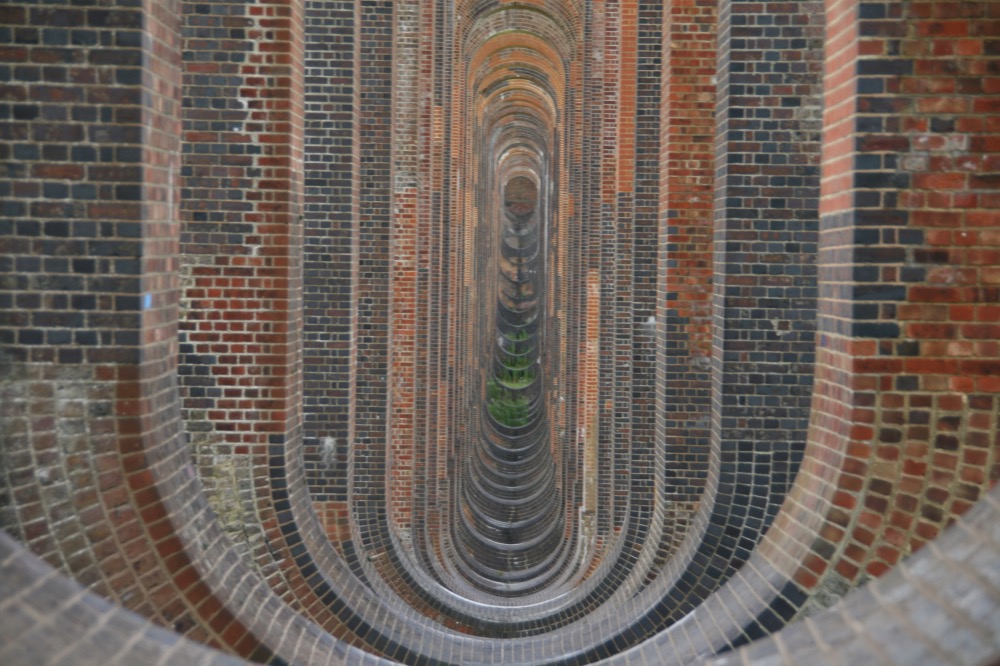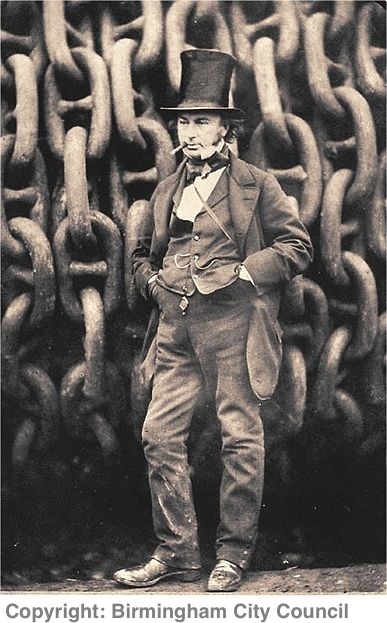The greatest engineer of the Victorian age.
Because so much of it is so very special, I have been reading up on railways and railway architecture.
Huh? Railway architecture?
Can you say Grand Central station in Manhattan – maybe the greatest interior in America? St. Pancras or King’s Cross in London? The gorgeous Ouse Valley viaduct in Sussex?

The supports for the Ouse Valley viaduct, 1841. Can you say ‘Perfection’?
One of the facts disclosed in my reading is that most of the world’s railways run on 4′ 8.5″ spaced rails. Known, to this day, as the Stephenson Standard, after the great Victorian railway engineer. How did he come up with that? His wife’s height? Some personal recollection? A dictate of mine engineering where he got his start? It seems to bear no resemblance to known measures, Imperial or Metric. (Please refer to Comment #2 for the solution – thank you, Alex!) I learned also that the giant amongst Victorian engineers, Isambard Kingdom Brunel (what a name!) refused to compromise with the limp-wristed Stepehnson Standard. Compromise was not a word in Brunel’s vocabulary. When he designed the Great Western Railway its was no less than a seven foot gauge. His tracks would run the largest locomotives and would be the most stable.
This refusal to compromise, his drive, determination, individuality and commitment, is what distinguished him in an already distinguished group of great engineers. Today you see that rarely – Steve Jobs is an obvious example.
Here’s the picture – you doubtless know it – maybe the greatest industrial portrait of a powerful man ever made. A man with no fear of getting his hands dirty. An engineer’s engineer.

The backdrop comprises the chains used to launch the Great Eastern iron ship
down the slipway. (Photographer by Robert Howlett, 1857.)
Today, everyone is a ‘team member’. The order taker at MacDonald’s. The Target sales clerk. The smug coffee maker behind the Starbucks counter. The workers at Nikon and Canon and Dell and Microsoft. All seeking to avoid accountability by hiding within the ‘team’.
Not so with I. K. Brunel. He took huge risks, had huge failures. And greater successes. What a man. What a photograph.
The ultimate book of railway photography while we are on the topic? None other than O. Winston Link’s.
Absolutely agree about Brunel – the man and the photograph. Although I’m no engineer he has always been an icon to me. I visited the remains of his ‘atmospheric railway’ on the South coast not long ago. An amazing method of transport that was ‘environmentally sound’ (kind of…) and innovative. It only lasted a year, but as you say, he was a man not afraid to fail in the interests of pushing the boundaries of engineering and knowledge.
I understood that the Stephenson Standard was based on the then-standard coach width, which was designed so that the wheels went along the relatively smooth parts of the road. In the days before tarmacadam, only the wheel ruts mattered.
The gauge is very similar to that used on Roman chariots, which of course would have been the first wheeled users of British roads. That may be a coincidence, of course.